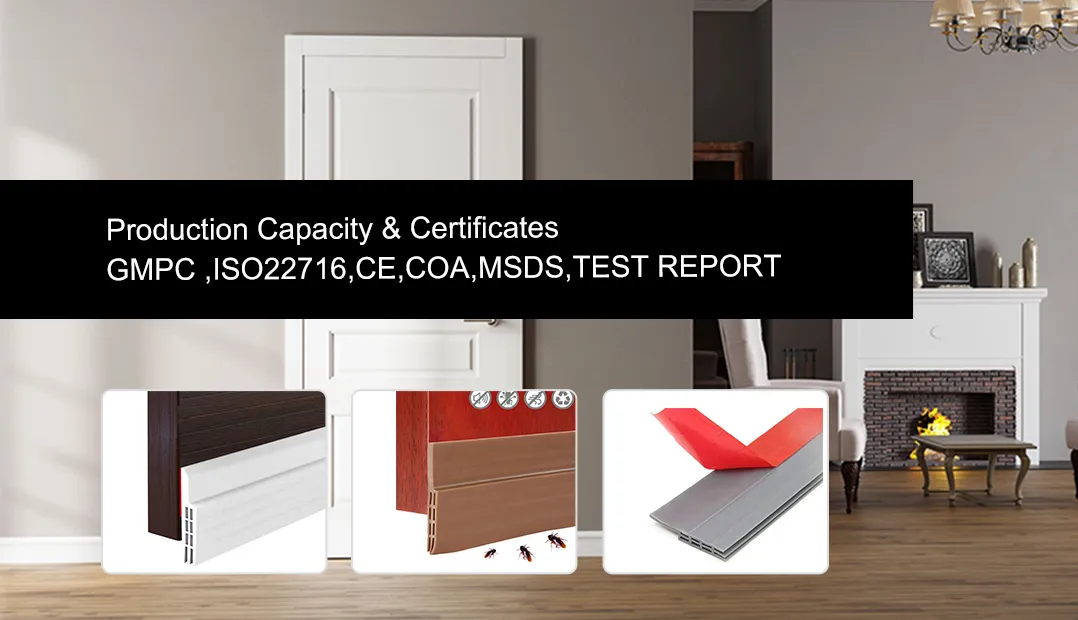Weatherproofing Bottom Seal Strip for Exterior Doors to Block Drafts and Moisture
The Importance of Exterior Door Bottom Seal Strips A Comprehensive Guide
When it comes to home maintenance and energy efficiency, one often overlooked component is the exterior door bottom seal strip. This simple yet essential feature plays a crucial role in protecting your home from the elements, enhancing energy efficiency, and increasing the overall comfort of your living space. In this article, we will explore the various benefits of door bottom seal strips, the types available, and how to properly install and maintain them.
Understanding Door Bottom Seal Strips
Door bottom seal strips are designed to fit along the bottom of exterior doors, creating a barrier between the indoor environment and the outside world. Made from materials such as rubber, vinyl, or foam, these strips serve to block drafts, dust, moisture, and pests from entering your home. They are particularly important in regions with extreme weather conditions, where cold drafts and heavy rain can significantly impact indoor climate.
Benefits of Door Bottom Seal Strips
1. Energy Efficiency One of the primary benefits of installing a door bottom seal strip is improved energy efficiency. By preventing cold air from infiltrating during winter or cool air from escaping in summer, these seals help maintain a stable indoor temperature, resulting in lower energy bills. A well-sealed door can reduce heating and cooling costs by as much as 20%.
2. Comfort A properly sealed door contributes to overall comfort levels within your home. It reduces cold drafts in winter and keeps cool air inside during the summer months. This can create a more pleasant living environment, making it easier to enjoy your home year-round.
3. Moisture and Pest Protection Exterior door bottom seal strips act as a barrier against moisture and pests. By sealing gaps at the bottom of the door, they help prevent water from seeping inside, which can lead to mold and structural damage. Additionally, they deter pests such as insects and rodents from entering your home, helping to maintain a healthy living space.
4. Noise Reduction Seal strips can also contribute to noise reduction, blocking sound from outside and creating a quieter indoor environment. This is particularly beneficial for homes located in noisy areas or near busy streets.
5. Improved Aesthetics Beyond their functional benefits, door bottom seal strips can also enhance the appearance of your doors. Available in various styles and colors, they can complement your home’s exterior design while providing a polished finish.
Types of Door Bottom Seal Strips
There are various types of door bottom seal strips available on the market, including
exterior door bottom seal strip

- Rubber Seals Durable and flexible, rubber seals offer excellent weather resistance and durability, making them ideal for heavy-use doors. - Vinyl Seals These are typically less expensive than rubber and can be a great option for interior doors as well. - Brush Seals Brush seals consist of bristles that effectively block drafts while allowing for a flexible fit, often used in areas where doors need to open and close easily.
- Foam Seals Foam strips are easy to install and provide decent insulation against air and moisture, although they may not be as durable in high-traffic areas.
Installation and Maintenance
Installing a door bottom seal strip is a straightforward process that can be done as a DIY project. Here are some quick steps to guide you
1. Measure the Door Start by measuring the width of the door and the gap at the bottom.
2. Choose the Right Seal Select a seal that suits your door type and the climate in your area.
3. Cut to Size Using scissors or a utility knife, cut the seal strip to the measured length.
4. Attach the Seal Most strips come with adhesive backing for easy application. Clean the bottom of the door, peel off the protective layer, and firmly press the seal into place.
5. Test the Fit Close the door to ensure it fits snugly against the seal, making adjustments as necessary.
Maintaining door bottom seal strips involves regular inspections for wear and tear. Replace any damaged or worn seals to ensure continued protection against the elements.
Conclusion
In conclusion, exterior door bottom seal strips are a small investment in maintaining the comfort, efficiency, and integrity of your home. By understanding their importance and ensuring proper installation and maintenance, you can enjoy a more comfortable living space while saving money on energy costs. Whether you’re dealing with severe weather or simply aiming to enhance your home’s comfort, these seals are an essential component of home improvement.
-
Under Door Draught Stopper: Essential ProtectionNewsJul.31,2025
-
Garage Door Seal and Weatherstrips for ProtectionNewsJul.31,2025
-
Edge Banding Tape for Perfect EdgesNewsJul.31,2025
-
Table Corner Guards and Wall Corner ProtectorsNewsJul.31,2025
-
Stair Nose Edging Trim and Tile Stair SolutionsNewsJul.31,2025
-
Truck Bed Rubber Mats for Pickup BedsNewsJul.31,2025
-
Window Weather Stripping for Noise ReductionNewsJul.29,2025